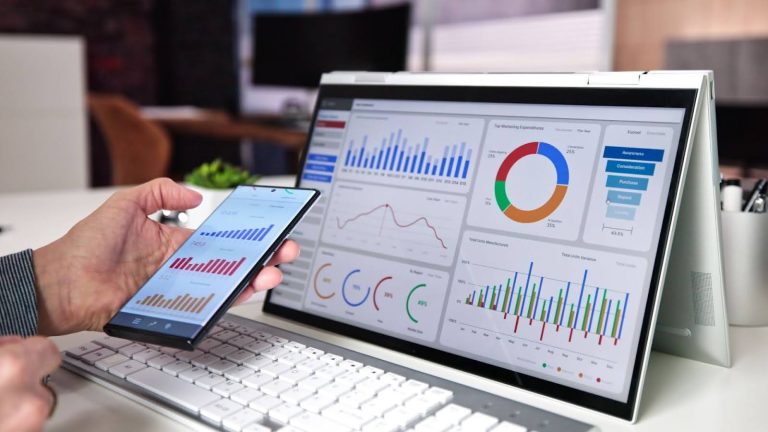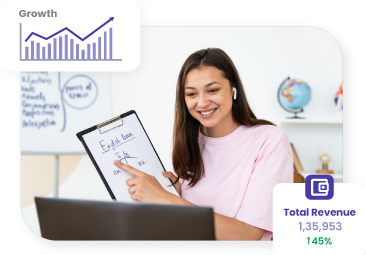A Customer Data Platform (CDP) isn’t just another tech buzzword, it’s a transformative tool that’s revolutionizing how businesses connect with their customers. According to MarketsandMarkets, the CDP market is projected to skyrocket from $5 billion in 2023 to $28.2 billion by 2028, boasting a Compound Annual Growth Rate (CAGR) of 39.9%.
This explosive growth underscores a vital truth: in today’s data-driven world, understanding and utilizing customer data is no longer optional, it’s a competitive necessity.
In this detailed guide, you’ll uncover everything you need to know about Customer Data Platforms. Whether you’re a content creator, an online coach, or an entrepreneur, this blog will show you how a CDP can maximize your customer data’s full potential and drive your success. Let’s get started!
Understanding Customer Data Platforms (CDPs)

Customer data often lives in different systems, making it difficult to see the full picture. In the following sections, we’ll explore what exactly a CDP is and how it’s different from general data management tools.
What Is a CDP?
A Customer Data Platform (CDP) is a specialized software solution that collects, organizes, and activates customer data from a wide array of sources into a single, unified profile.
Think of it as a central command center for your customer information. It pulls in data from online channels, such as website visits, email interactions, and social media engagement, as well as offline sources like in-store transactions and customer service calls. This all-encompassing approach ensures you’re not missing a single piece of the puzzle when it comes to understanding your customers.
Why It’s Different
Unlike traditional data management systems, which often leave data trapped in departmental silos (marketing in one corner, sales in another, and customer support in a third), a CDP breaks down these barriers. Legacy systems might give you a fragmented view—say, a customer’s purchase history without their browsing habits.
A CDP stitches these fragments together into a cohesive, comprehensive profile. This unified view is a game-changer because it eliminates blind spots, letting you see the full scope of a customer’s interactions with your brand.
Solving the Silo Problem
Data silos are more than an inconvenience—they’re a business liability. When information is scattered across platforms, you’re left guessing about customer preferences or behavior. A CDP tackles this by consolidating everything into one accessible hub. For instance, if a customer browses your site, emails your support team, and then buys in-store, a CDP connects those dots. This holistic perspective empowers you to deliver seamless experiences and make informed decisions, turning raw data into a strategic superpower.
Ready to see how this magic happens? Let’s dive into the mechanics of a CDP.
How a CDP Works?
A CDP operates through a straightforward yet powerful three-step process: collection, unification, and activation. Here’s how each step works and why it matters to you.
Step 1: Data Collection
The process begins with gathering data from every possible customer touchpoint. This includes digital interactions, such as clicks on your website, app usage, or social media likes. It also includes offline activities, like purchases at a physical store or notes from a call center.
Imagine a customer who checks out your blog, signs up for a newsletter, and later buys a product in person. A CDP captures all these moments, ensuring nothing slips through the cracks. This exhaustive collection lays the groundwork for a complete customer picture.
Step 2: Data Unification
Once the data is collected, the CDP gets to work unifying it. Using sophisticated algorithms, it matches and merges data points, resolving duplicates and inconsistencies. For example, if a customer uses one email on your site and another in-store, the CDP links them to a single profile.
It might also reconcile different device usage, such as a phone and a laptop, into a single identity. This step is crucial because it transforms a messy pile of data into a clean, real-time-updated profile you can trust.
Step 3: Data Activation
The final step is where the CDP shines: activation. It takes those unified profiles and integrates them with your marketing tools, like email platforms like Mailchimp, ad networks like Google Ads, or your CRM system. This connection lets you put the data to work immediately.
For instance, you could send a discount code to someone who abandoned their cart or retarget a website visitor with a personalized ad. Activation turns insights into action, making your marketing more timely and relevant.
The Tech Behind It
What powers this process? Technologies like real-time data processing ensure profiles update instantly as new interactions occur, while machine learning spots patterns and predicts trends. You don’t need to be a tech expert to benefit—these tools run quietly in the background, delivering results you can use right away.
Now that you know the how, let’s explore the key features that make a CDP such a standout tool.
4 Key Features of a CDP
A CDP is a dynamic platform packed with features to supercharge your customer strategy. Here’s a deep dive into its core capabilities:
1. Real-time Data Processing
Speed is everything in modern marketing, and real-time data processing delivers it. This feature updates customer profiles the moment new data comes in—whether it’s a page view, a purchase, or a social media comment. Why does this matter? Because acting on fresh data can make or break a campaign. For example, if a customer shows interest in a product, you can send a targeted offer within minutes, not days. In a fast-moving market, this agility gives you a serious edge.
2. Customer Segmentation
Segmentation lets you divide your customer base into meaningful groups based on traits like age, buying habits, or engagement levels. A CDP’s advanced tools make this process precise and flexible. You could create a segment of “frequent buyers over 30” or “cart abandoners from the last week” with just a few clicks. These tailored groups allow you to craft messages that hit home—like offering VIP perks to loyal customers—boosting both engagement and conversions.
3. Integration with Marketing Tools
A CDP doesn’t work in isolation—it syncs seamlessly with your existing marketing ecosystem. Whether it’s connecting to HubSpot for email campaigns, Facebook Ads for retargeting, or Tableau for analytics, this integration ensures your data flows where it’s needed most. Picture this: your CDP feeds real-time customer insights into your ad platform, letting you target high-value prospects with pinpoint accuracy. It’s like giving your entire marketing stack a power boost.
4. Data Privacy and Compliance
With regulations like GDPR (General Data Protection Regulation) and CCPA (California Consumer Privacy Act) in play, protecting customer data is non-negotiable. A CDP comes equipped with features like consent management, tracking customer permissions, and data encryption to keep information secure. It also provides audit logs to prove compliance if regulators come knocking. These tools not only shield your customers but also protect your business from hefty fines and reputational damage.
These features combine to create a platform that’s fast, flexible, connected, and secure. Want to know how they translate into real-world gains? Let’s look at the benefits next.
Top 4 Benefits of Using a CDP

A CDP delivers a host of advantages that can transform your business from the inside out. Here’s how it pays off:
1. Improved Customer Insights
By unifying data from every channel, a CDP gives you a 360-degree view of your customers. You’ll see not just what they buy, but how they browse, what they click, and where they hesitate. For instance, you might discover that a segment loves your emails but rarely shops online—prompting a new in-store promotion. These deep insights help you anticipate needs and refine your strategy, building stronger connections with every interaction.
2. Enhanced Marketing Effectiveness
Personalization is the name of the game, and a CDP makes it effortless. With real-time, accurate data, you can tailor campaigns to individual preferences—think custom product recommendations or birthday discounts. Research from Epsilon shows personalized experiences drive 80% more purchases, and a CDP ensures your efforts land. The result? Higher click-through rates, more conversions, and a marketing budget that works harder.
3. Increased Operational Efficiency
Say goodbye to the days of manually stitching together data from spreadsheets or chasing down IT for reports. A CDP automates the heavy lifting—collecting, cleaning, and distributing data—so your team can focus on strategy, not grunt work. For example, instead of spending hours segmenting a list, your CDP does it instantly. This time savings translates to a leaner operation that’s ready to pivot when opportunities arise.
4. Better Compliance with Data Regulations
Navigating privacy laws can feel like walking a tightrope, but a CDP keeps you steady. Its built-in compliance tools—like consent tracking and secure storage—reduce the risk of violations that could cost you millions (GDPR fines can hit €20 million or 4% of revenue). Plus, by showing customers you take their privacy seriously, you build trust—a priceless asset in today’s market.
See how smarter data equals stronger sales.
With Exly, turn insights into impact. From automated customer management to data-backed marketing and scalable monetization, our all-in-one platform helps you grow faster, sell smarter, and serve better.
4 Common Use Cases for CDPs
A CDP’s versatility makes it a Swiss Army knife for customer engagement. Here are some standout scenarios where it shines:
1. Personalized Marketing Campaigns
Imagine sending an email with a discount on a product a customer’s been eyeing, right when they’re most likely to buy. A CDP makes this possible by analyzing behavior and triggering tailored campaigns. For example, a retailer might use purchase history to upsell accessories to recent buyers. This personal touch increases relevance, loyalty, and sales—all powered by your CDP’s data.
2. Customer Journey Mapping
A CDP tracks every step of the customer journey, including, awareness, consideration, purchase, and beyond, across all channels. This visibility lets you spot bottlenecks, like a high drop-off rate at checkout, and fix them. Say you notice customers abandon carts after seeing shipping fees; you could test a free shipping threshold to smooth the path. Mapping the journey enhances every touchpoint, turning prospects into fans.
3. Predictive Analytics for Customer Behavior
Using historical data, a CDP can predict what customers might do next, like who’s at risk of leaving or who’s ready to upgrade. For instance, if engagement drops, you could preempt churn with a special offer. These forecasts, driven by machine learning, give you a crystal ball for planning, helping you stay one step ahead of customer needs and market shifts.
4. Cross-Channel Marketing Optimization
Consistency builds trust, and a CDP ensures your brand voice stays steady across email, social, web, and more. If a customer sees an ad on Instagram, then gets a matching email, the experience feels seamless. This unified approach reinforces your message and keeps customers engaged, no matter where they connect with you.
These use cases show how a CDP adapts to your goals. But how do you choose the right CDP for you? Let’s find out.
Choosing the Right CDP
Finding the perfect CDP means matching it to your business’s unique needs. Here’s a step-by-step breakdown:
Scalability
Your CDP must grow with you. As your customer base expands or data sources multiply, it should handle the load without hiccups. Look for platforms with proven capacity—can it manage millions of profiles or terabytes of data? Ask vendors about stress tests or client examples. A scalable CDP ensures you’re future-proofed, not outgrowing it in a year.
Integration Capabilities
Check how well the CDP plays with your current tools. Does it connect natively to your CRM (like Salesforce), email software (like SendGrid), or analytics (like Google Analytics)? If not, does it offer APIs or third-party connectors like Zapier? Seamless integration means your data flows freely, powering every part of your operation without manual workarounds.
Ease of Use
A steep learning curve can stall your team. Opt for a CDP with an intuitive interface—think drag-and-drop segment builders or pre-set reports. Good documentation and responsive support (live chat, dedicated reps) are must-haves too. Test it out: can your non-tech staff use it? Ease of use speeds up adoption and results.
Compliance and Security
Data breaches or legal missteps can sink you, so prioritize a CDP with top-tier privacy features. Look for consent management, end-to-end encryption, and compliance with GDPR, CCPA, or industry standards like SOC 2. Ask about their security audits or breach response plans. A secure CDP keeps you compliant and credible.
Cost
Budget matters, so dig into the pricing details. Is it a flat fee, or does it scale with data volume? Watch for extras like setup costs, API fees, or overage charges. Compare plans—does the base tier cover your needs, or will you need to upgrade? A transparent cost structure helps you avoid sticker shock down the line.
Questions to Ask Vendors
- How fast does your CDP process real-time updates, and what’s the lag?
- Which tools integrate out of the box, and how’s the setup?
- What’s your approach to GDPR/CCPA compliance?
- Can you share a case study of a similar-sized business using your CDP?
Conclusion
In a data-driven era, a Customer Data Platform is your ticket to staying ahead. It unifies your customer data, sharpens your marketing, boosts efficiency, and keeps you compliant—all while revealing insights that fuel growth. This guide has covered the essentials: what a CDP does, how it works, its features, benefits, use cases, comparisons, and selection tips. Now, it’s up to you to act.
Want to scale smarter, not harder?
Exly combines CRM, payment automation, analytics, and marketing tools, giving you the power to turn customer data into real revenue. Whether you’re selling workshops, launching courses, or building your brand, Exly streamlines every step.
FAQ
1. What exactly does a Customer Data Platform (CDP) do for my business?
A CDP collects data from all your customer touchpoints—online and offline—and unifies it into real-time, comprehensive profiles. This gives you a 360-degree view of each customer, enabling personalized marketing, better customer experiences, and data-driven decisions.
2. How is a CDP different from my existing CRM system?
While a CRM focuses on managing customer relationships and sales data, such as contact details and deal stages, a CDP goes deeper by aggregating behavioral data from multiple sources, including website visits, app usage, and more.
3. Do I need a CDP if I’m a small business?
Yes, a CDP can be valuable even for small businesses, especially if you want to personalize customer experiences or streamline data management. Platforms like Exly offer affordable, scalable solutions that grow with you.
4. How does a CDP ensure compliance with data privacy laws?
A CDP includes features like consent management, data encryption, and audit logs to comply with regulations like GDPR and CCPA. These tools track customer permissions, secure sensitive data, and provide transparency for regulatory audits.
5. What’s the biggest challenge when implementing a CDP?
Integration and data quality are common hurdles. Ensuring your CDP connects seamlessly with existing tools (like your CRM or email platform) requires planning, and cleaning up inconsistent or duplicate data can take time.





